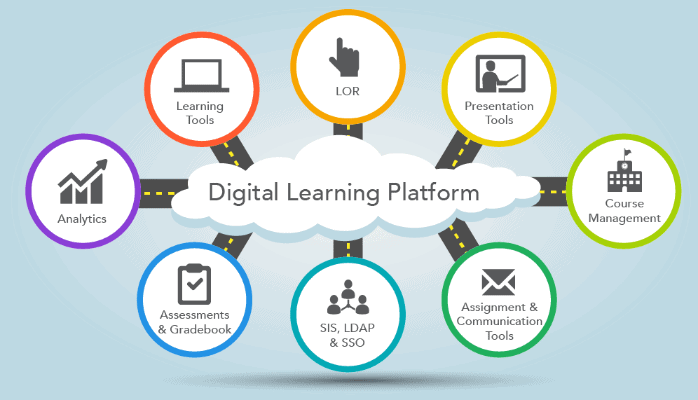
Digital Learning is any learning d by technology or using technology to instructive practice. Digital learning uses a wide variety of teaching strategies supported by technology. It is nothing but a mix of blended learning or flipped learning.
With the advent of Digital Learning, a student is no longer restricted by time, place, a teaching strategy, and a student’s pace of learning. A student can access digital learning material in a classroom or on any device and take their own time to understand and practice concepts. Also, a child’s experience is not limited by the four walls of the classroom; through the availability of the internet, they can be introduced to content and experiences from anywhere in the world.
But does that mean that handing a device to a student is digital learning? Or is the use of digital tools enough? Just mere exposure to content on the internet fails to capture the purpose of the content and why the content is being taught.
Digital Learning enhances learning; it does not just simplify the teaching-learning practice by using digital tools. The thoughtful implementation of technology to enable students to interact and exchange ideas with their teachers enhances the learning experience.

As the world went into a lockdown amidst the COVID-19 crisis, all educational institutions had to be shut down and embrace online learning. Where most institutions already had the infrastructure and systems to adapt to online learning quickly. Most educational institutions lack the means to start online classes or provide any digital support to students due to a lack of infrastructure, awareness and training for both teachers and students.
The crisis opened the eyes of the government and various private organisations that came out with digital platforms, training support and means to continue learning at subsidised or no price at all.
In 2020, every educational organisation will work toward making its system technologically sound to promote digital learning in the future.
National Education Policy-2020 and Digital Learning
While the National Education Policy covers various aspects such as Early childhood education, inclusive education, and restructuring of the current curriculum, the common thread that runs through it is the combination of technology and education.
The NEP focuses on the use and impact of blended learning – a combination of face-to-face education and online or tech-based learning.
The policy focuses on providing online and technical aid to teachers and building e-libraries in various regional languages. The policy has also included courses on coding and artificial intelligence for students, making them ready for a world with the growing use of technology.
The launch of e-learning apps and online training for teachers will further solidify India’s foundation of digital learning.
Final Thoughts:
Digital learning is the future, and we should start preparing for the next generation together.

